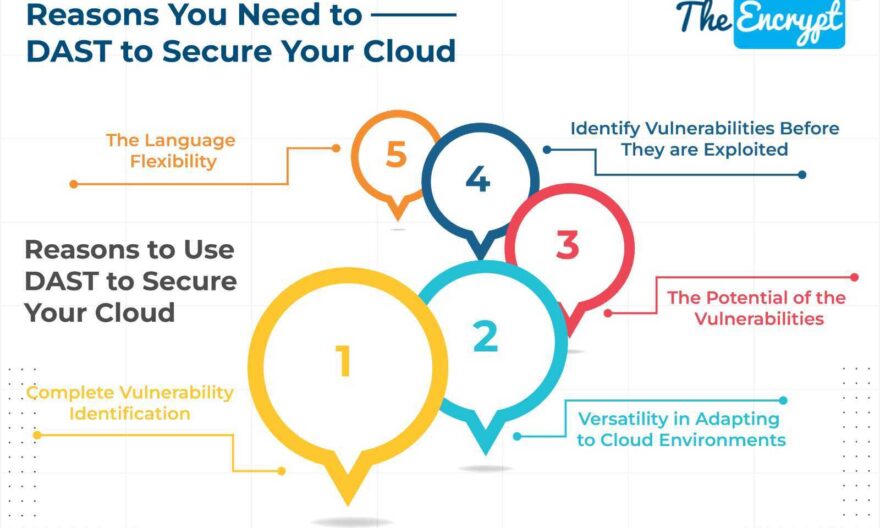
In modern times, businesses rely on cloud services to make their work efficient and effective. When a business migrates its data and applications to a cloud, it faces many challenges. Cloud computing has a dynamic nature and a distributed architecture there can be a lot of potential risks. Several security services are available to keep you safe from all of these potential risks. One of them is DAST, which stands for Dynamic Application Security Testing.
It can find vulnerabilities within web applications and services in the cloud. Once the owners know the vulnerabilities, they can fix them as soon as possible so that their web applications and data are safe from attackers and hackers. Let’s learn about the reasons that make DAST a must-have.
Defining Dynamic Application Security Testing (DAST)
DSAT is a type of security testing method used to identify vulnerabilities and security threats within cloud storage, applications, and APIs. DSAT provides users with insight into the problems their data or application is about to face. This can be used by businesses to mitigate or prioritize problems.
Businesses also use DSAT during the developmental phase of their applications. This ensures that the most destructive vulnerabilities are sorted just at the start of their work.
How does DAST work?
DAST tests the security of web applications and devices by stimulating attacks on them and checking their responses. It looks at the web application and data from the attacker’s perspective and lets its owners find the loopholes. And this makes it different from any other competition in the current market. It works like a boon for people storing data and applications on clouds by securing them from all ends.
Reasons to use DAST to secure your cloud
Complete Vulnerability Identification
The problem with most vulnerability identification mechanisms is that they only go through the internal structure and may miss some vulnerabilities. However, in the case of DAST, it uses an outsider attacker perspective and stimulates attacks on the cloud. When these attacks are generated, every single vulnerability is identified. Once you know what’s wrong with your cloud application or data, you can take measures to make it foolproof.
One of the other problems with other vulnerability identifiers is that they mostly ignore the problems that arise in real-time. However, DAST specializes in providing information related to vulnerabilities in real-time.
Versatility in Adapting to cloud environments
Not all of us had access to cloud technologies a decade ago. However, in modern times, every business tries to move its data and applications partially or completely to the cloud. DAST has all it takes to integrate web applications hosted on clouds.
DAST tools also come with many cloud-specific specifications, making them perfect for use with different cloud services.
The potential of the vulnerabilities
Most vulnerability identifiers, while finding vulnerabilities internally, cannot find the potential it has. But DAST also knows that it exploits vulnerabilities to find them out. This process finds a single vulnerability and provides a clear view of its potential. So, if the vulnerability is problematic, one might look to fix it in real-time.
Identify vulnerabilities before they are exploited
DAST helps the users of cloud services to take a proactive step towards the security of their data. Rather than working on the security of your data after a breach, DAST ensures that you know about the vulnerabilities at the start.
This approach minimizes potential threats. With all security-related worries, businesses can look up to other prospects without worrying about data.
The language flexibility
Another amazing thing about DAST is that it’s not restricted to any specific programming language. It can work for applications and cloud data regardless of the development language.
Can DAST detect data leakage risks?
DAST can detect a spectrum of vulnerabilities in cloud environments, such as data leakage risks, denial of service vulnerabilities, and many more.
Dynamic Application Security Testing (DAST) is a tool that helps identify vulnerabilities in computer programs and websites that could lead to data leakage. These vulnerabilities include problems like insecure storage buckets, where sensitive information is stored without proper protection; unencrypted data transfers that allow anyone to intercept and read sensitive data as it moves between systems; and inadequate access controls, which make it too easy for unauthorized users to access sensitive information.
Imagine leaving your important files in a bucket without a lid, sending secret messages without locking them in a box, or having a door with a weak lock. DAST helps find and fix these vulnerabilities before they can be exploited, ensuring that sensitive data remains secure and only accessible to authorized users.
Conclusion
There are enough reasons for businesses to prefer DAST over its competitors. It provides its users with a proactive approach to detecting all types of cloud data vulnerabilities. It’s like having a security guard that checks for hidden vulnerabilities and protects your important data. When your data is secure, you can focus on the efficiency of other aspects of your business. You can keep adding new data to the cloud as there is negligible risk of getting tampered with or leaked.
With DAST, you can ensure your cloud system is strong against cyber threats and meets the rules for data protection. Using DAST lets you stay ahead of the game and keep your cloud system safe and sound in today’s online world.
